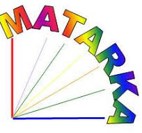Gyepek kontrollált égetése, mint természetvédelmi kezelés – alkalmazási lehetőségek és korlátok
Absztrakt
A kontrollált égetés olcsó, kis élőmunka-igényű módszer, amely alkalmas lehet a cserjésedés és erdősödés megakadályozására, az avar-felhalmozódás csökkentésére és spontán tűzesetek megelőzésére. A nem megfelelően alkalmazott égetés azonban kedvezőtlen hatással lehet a gyepi ökoszisztémákra azáltal, hogy segíti természetvédelmi szempontból nemkívánatos (hatékony kompetítor vagy inváziós) fajok előretörését, illetve károsíthatja veszélyeztetett fajok populációit. Tanulmányunkban áttekintjük az égetés gyepi ökoszisztémákra gyakorolt hatásait és az Európában végzett kontrollált égetéses vizsgálatokat. Az észak-amerikai égetéses vizsgálatok példáiból merítve áttekintjük, hogy milyen elemeket lehetne az európai természetvédelmi gyakorlatba átültetni az égetés időzítését, gyakoriságát, az égetés és legeltetés együttes alkalmazását, illetve az égetésnek az inváziós fajok visszaszorításában való felhasználását illetően. Bár az égetés hatásai természetvédelmi szempontból ellentmondásosak, a kontrollált égetésnek bizonyos körülmények között lenne létjogosultsága a gyepek természetvédelmi kezelésében. Az égetés gyakorlati alkalmazásának azonban feltétele az égetni kívánt gyeptípusokban gondosan tervezett kísérletes vizsgálatok kivitelezése és tapasztalatainak összegzése.
Hivatkozások
Baeza, M. J., Luís, D., Raventós, J. & Escarre, A. (2002): Factors influencing fire behaviour in shrublands of different stand ages and the implications for using prescribed burning to reduce wildfire risk. – Journal of Environmental Management 65: 199–208.
Bakker, J. & Berendse, F. (1999): Constraints in the restoration of ecological diversity in grassland and heathland communities. – Trends in Ecology & Evolution 14: 63–68.
Bond, W. J., Woodward, F. I. & Midgley, G. F. (2005): The global distribution of ecosystems in a world without fi re. – New Phytologist 165: 525–538.
Cummings, D. C., Fuhlendorf, S. D. & Engle, D. M. (2007): Is altering grazing selectivity of invasive forage species with patch burning more effective than herbicide treatments? – Rangeland Ecology & Management 60: 253–260.
D’Antonio, C. M. (2000): Fire, plant invasions, and global changes. – In: Mooney, H. A. & Hobbs, R. J. (szerk.): Invasive Species in a Changing World. Island Press, Washington DC, USA, pp. 65–93.
DiTomaso, J. M., Brooks, M. L., Allen, E. B., Minnich, R., Rice, P. M. & Kyser, G. B. (2006): Control of invasive weeds with prescribed burning. – Weed Technology 20: 535–548.
Fuhlendorf, S. D., Engle, D. M., Kerby, J. & Hamilton, R. (2009): Pyric herbivory: Rewilding landscapes through the recoupling of fire and grazing. – Conservation Biology 23: 588–598.
Fuhlendorf, S. D. & Engle, D. M. (2004): Application of the fi re–grazing interaction to restore a shifting mosaic on tallgrass prairie. – Journal of Applied Ecology 41: 604–614.
Hansson, M. & Fogelfors, H. (2000): Management of a semi-natural grassland; results from a 15-year-old experiment in southern Sweden. – Journal of Vegetation Science 11: 31–38.
Howe, F. H. (1994): Response of early- and late-flowering plants to fire season in experimental prairies. – Ecological Applications 4: 121–133.
Isselstein, J., Jeangros, B. & Pavlů, V. (2005): Agronomic aspects of biodiversity targeted management of temperate grasslands in Europe- A review. – Agricultural Research 3: 139–151.
Johnson, S. R. & Knapp, A. K. (1995): The influence of fire on Spartina pectinata wetland communities in a northeastern Kansas tallgrass prairie. – Canadian Journal of Botany 73: 84–90.
Kahmen, S., Poschlod, P. & Schreiber, K.-F. (2002): Conservation management of calcareous grasslands. Changes in plant species composition and response of functional traits during 25 years. – Biological Conservation 104: 319–324.
Köhler, B., Gigon, A., Edwards, P. J., Krüsi, B., Langenauer, R., Lüscher, A. & Ryser, P. (2005): Changes in the species composition and conservation value of limestone grasslands in Northern Switzerland after 22 years of contrasting managements. – Perspectives in Plant Ecology 7: 51–67.
Liira, J., Issak, M., Jögar, Ü., Mändoja, M. & Zobel, M. (2009): Restoration management of a floodplain meadow and its cost-effectivenes – the results of a 6-year experiment. – Annales Botanici Fennici 46: 397–408.
MacDougall, A. S. & Turkington, R. (2007): Does the type of disturbance matter when restoring disturbance-dependent grasslands? – Restoration Ecology 15: 263–272.
Page, H. & Goldammer, J. G. (2004): Prescribed burning in landscape management and nature conservation: The first long-term pilot project in Germany in the Kaiserstuhl viticulture area, Baden-Württemberg, Germany – International Forest Fire News 30: 49–58.
Pausas, J. G. (1999): Response of plant functional types to changes in the fire regime in Mediterranean ecosystems: A simulation approach. – Journal of Vegetation Science 10: 717–722.
Pyke, D. A., Brooks, M. L. & D’Antonio, C. (2010): Fire as a restoration tool: A decision framework for predicting the control or enhancement of plants using fire. – Restoration Ecology 18: 274–284.
Robichaud, P. R., Beyers, J. L. & Neary, D. G. (2000): Evaluating the effectiveness of postfire rehabilitation treatments. General technical report RMRS-GTR-63. U.S. Department of Agriculture, Rocky Mountain Research Station, Fort Collins, Colorado.
Rowe, H. I. (2010): Tricks of the trade: Techniques and opinions from 38 experts in tallgrass prairie restoration. – Restoration Ecology 18: 253–262.
Ryser, P., Langenauer, R. & Gigon, A. (1995): Species richness and vegetation structure in a limestone grassland after 15 years management with six biomass removal regimes. – Folia geobotanica & phytotaxonomica 30: 157–167.
Simmons, M. T., Windhager, S., Power, P., Lott, J., Lyons, R. K. & Schwope, C. (2007): Selective and non-selective control of invasive plants: the short-term effects of growing-season prescribed fire, herbicide, and mowing in two Texas prairies. – Restoration Ecology 15: 662–669.
Smith, J. K. (szerk.) (2000): Wildland fire in ecosystems: effects of fire on fauna. Gen. Tech. Rep. RMRS-GTR-42-vol. 1. Ogden, UT: U.S. Department of Agriculture, Forest Service, Rocky Mountain Research Station. 83 pp.






